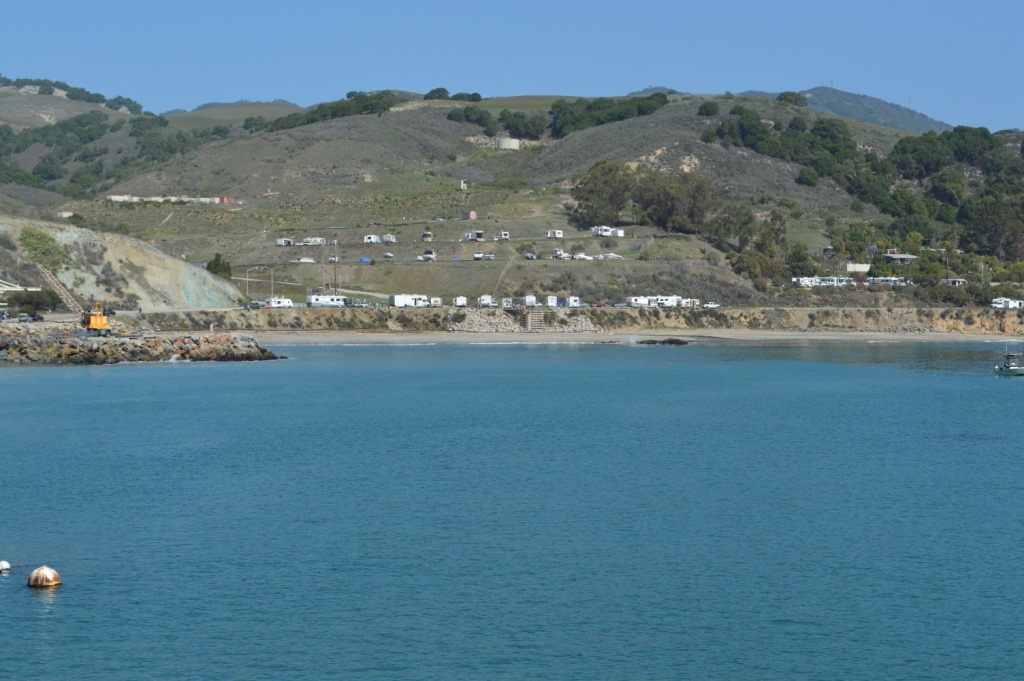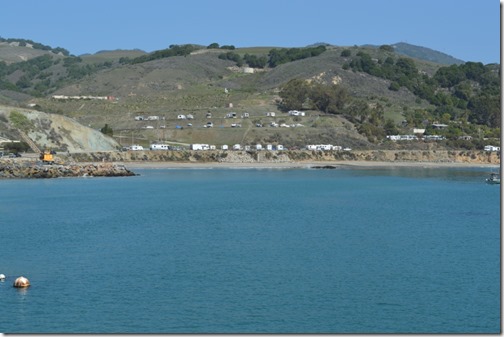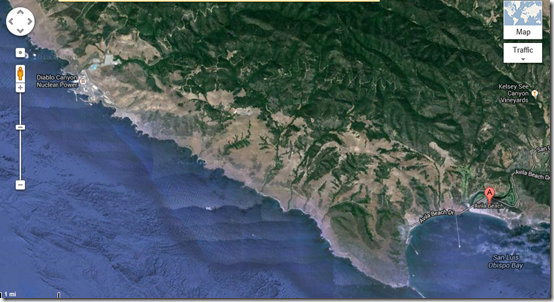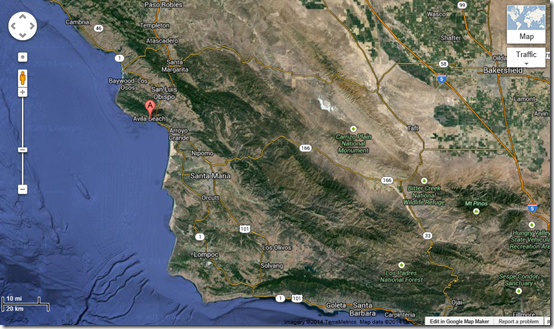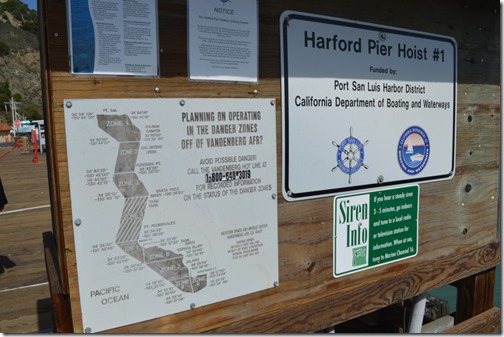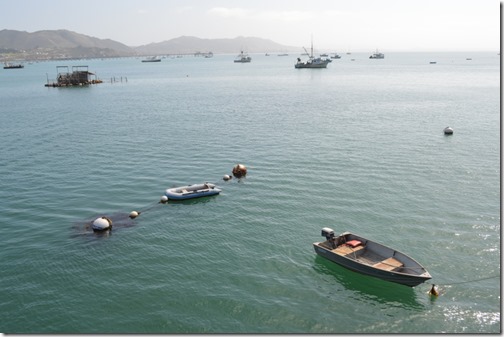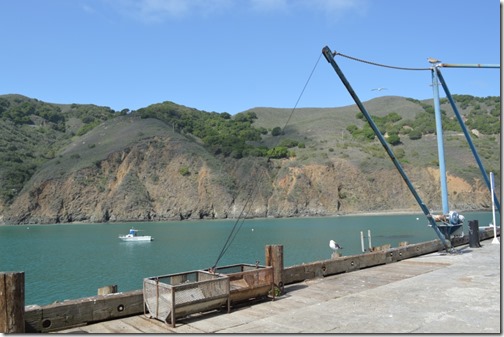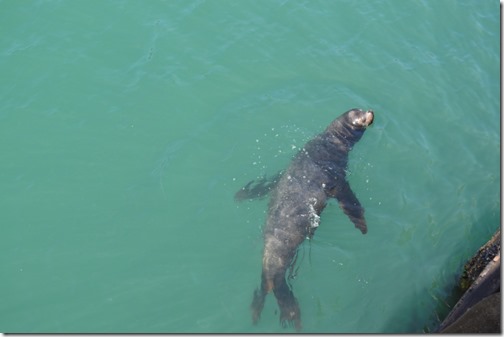“Hey honey, let’s go tour Central Coast California. Play in the sand dunes, eat breakfast on a fishing pier and add a little glow to our 25th honeymoon anniversary vacation.â€
Those were not the words I used before we went on our trip. Those are the revelations and insight I garnered from a weekend traveling around my central coast California neighborhood.
The slippery slopes of Avila BeachÂ
I have an exercise for you before telling you about Avila Beach, California. Think about the 200-mile radius from where you live. How well do you know all the places in that 200-mile radius?
Avila Beach is a small beach community of under 2,000 residents located in San Luis Obispo County, about 150 miles south from where I live in Monterey, California. I had never been there before this past weekend.
Driving off Highway 101 at the Avila Beach exit onto a tree lined road, one of the first sights are signs for Sycamore Mineral Springs Hotel on the left with hot springs. And on the right, the apparently very popular Avila Valley Barn country ranch fruit market. The market was jam packed with cars.
Along the next mile, after the road takes a bend beside San Luis Obispo Creek, in the middle of an open grassy field across from the golf course, we saw a coyote hunting some ground creature in the mid-morning sun. The small town of Avila Beach appeared with the beach a block away from the Front Street business district. Everything looked freshly painted with relatively new construction.
I continued driving west along the beach road. A road on the right was gated with PG&E signage for Diablo Canyon, California’s only operating nuclear power plant, built in the 1970s on earthquake fault lines. The power plant is in the hills and inaccessible and invisible to tourists at Avila Beach.
Diablo Canyon Nuclear Power plant activation was subject to many protests. The largest anti-nuclear protest in the USA occurred here in 1981 when over 1,900 activists were arrested including singer Jackson Browne.
There are only two locations where Highway 1, known as Cabrillo Highway locally, but more familiarly for tourists as Pacific Coast Highway, moves away from the coastline between San Francisco and Los Angeles. From Morro Bay the road goes inland to San Luis Obispo and returns to the coast briefly at Pismo Beach.
South of Pismo are the Guadalupe-Nipomo Sand Dunes and Vandenberg Air Force Base. Highway 1 takes a 75-mile inland route around the dunes and the military missile base before resuming its route along the coast at Gaviota Beach, about 20 miles north of Santa Barbara.
Harford Pier signs warn of Vandenberg Air Force base Danger Zones. This is the place where they fire InterContinental Ballistic Missiles over the Pacific in test trials. I wonder if the Siren Info signal designates a nuclear warning.
While eating breakfast at the Port Harford Chandlery Pub, I typed in Avila Beach on Google to get a little history.
What I learned was shocking.
In the late 1990s, Unocal began the cleanup of decades old oil seepage discovered years earlier from corroding pipes under the township, and which had caused a massive and toxic oil spill under the town. Over 6,750 truckloads of contaminated material was sent to a Bakersfield Landfill, and replaced with clean Guadalupe Dunes sand. Many of the town’s homes and businesses, including entire Front Street and Front Street Buildings, were razed as a result of the half mile wide excavation. After years of negotiation, Unocal agreed to a thirty million dollar settlement, which has been used to rebuild the town. Today, new buildings, homes, businesses, modern walkways and sea motif walls and benches take their place. A Sea Life Center welcomes visitors to explore the local ocean inhabitants up close.
Unocal to Tear Down Toxic Town — and Rebuild It (San Francisco Chronicle June 18, 1998 story on Avila Beach environmental settlement.)
The basic story is the oil company Unocal had old pipes that leaked about 400,000 gallons of oil underneath Avila Beach and oil was seeping into the ocean. Unocal eventually agreed to an environmental settlement of $200 million to tear down Avila Beach, remove the oil reservoir under the town and rebuild the town. This was the second largest toxics cleanup site in California history.
Avila Beach was rebuilt with clean Guadalupe Dunes sand. The irony here is the Guadalupe Sand Dunes on the southern border of San Luis Obispo County and northern Santa Barbara County are the site of the largest toxics cleanup in recent California history where over 9 million gallons of diluent and oil products leaked into the dunes from corroded pipes over a 40-year period of Unocal oil production. The Guadalupe-Nipomo Sand Dunes are one of the largest sand dune areas of California around the mouth of the Santa Maria River. Unocal was sold shortly after the Avila Beach environmental settlement and in 2005 merged with Chevron.
25th Anniversary of our Honeymoon flight to London
25 years ago my wife Kelley and I flew Pan American Airways from San Francisco to London for our honeymoon. There was a ticket agent on the college campus at University of California Davis and the ticket prices were $485 for San Francisco-London round-trip nonstop flights in economy. Pan Am was reeling from the Lockerbie terrorist bombing of December 1988. A promotion running in early 1989 offered a free ticket to any destination in North America with a paid ticket to London. We were married in January 1989, but we waited a couple of months to take our honeymoon with our income tax refund.
Just prior to boarding the aircraft for the London Pan Am flight, we watched the news of a major oil disaster from the Exxon Valdez in Prince William Sound, Alaska. The date was March 24, 1989.
Environmental disasters happen, time lets memory forget and tourists are often oblivious to the past issues of industrialization.
Every March 24 I think of Exxon Valdez and our honeymoon to London.
I saw the film The Impossible today about the 2004 Indian Ocean tsunami and its destruction of Khao Lak, Thailand. I tend to remember the Indian Ocean tsunami on Boxing Day.
I remember the Fukushima nuclear accident from the tsunami on March 11, 2011.
The oil spill damage of Avila Beach has supposedly been contained. After the two great tsunami disasters in Asia in the past decade, I pray Diablo Canyon does not see a major earthquake or tsunami or operator error that results in a nuclear disaster.
Our Central Coast of California is a special place. Yet, like Prince William Sound in rural Alaska, our rural California coastline has its own history and stories of environmental oil disasters and other troubling industrial zones for potential future issues.


